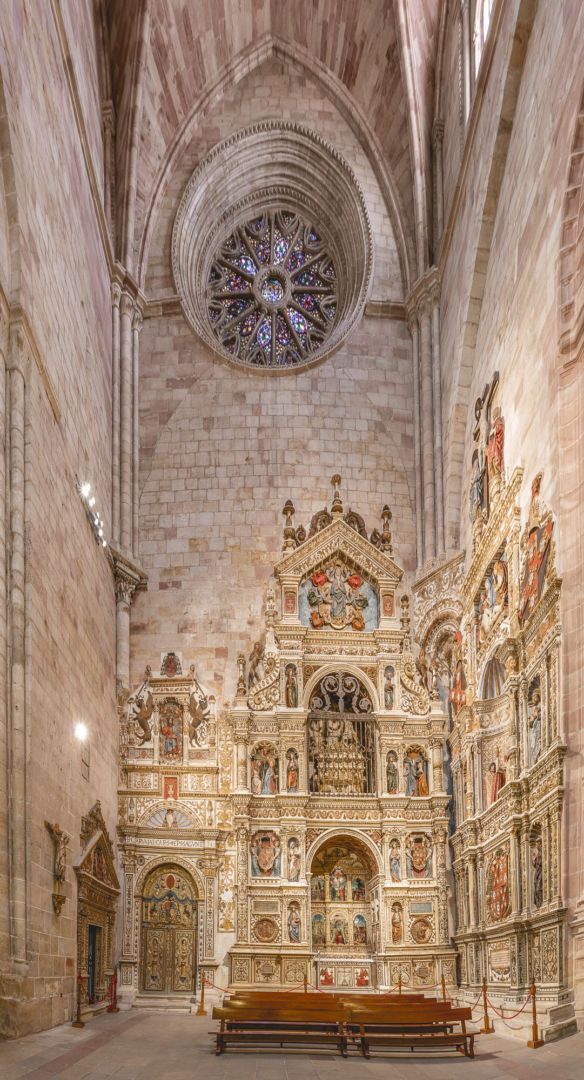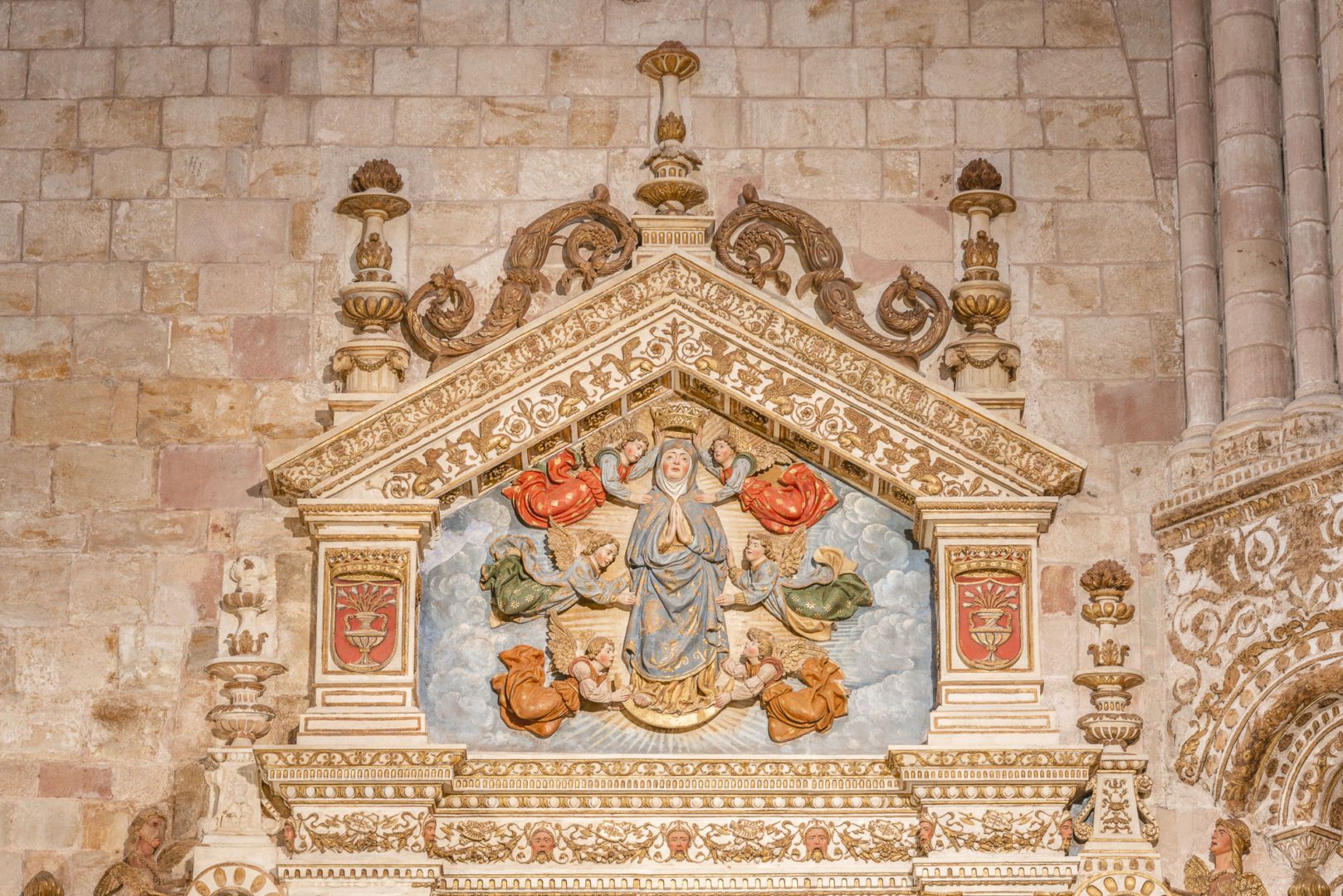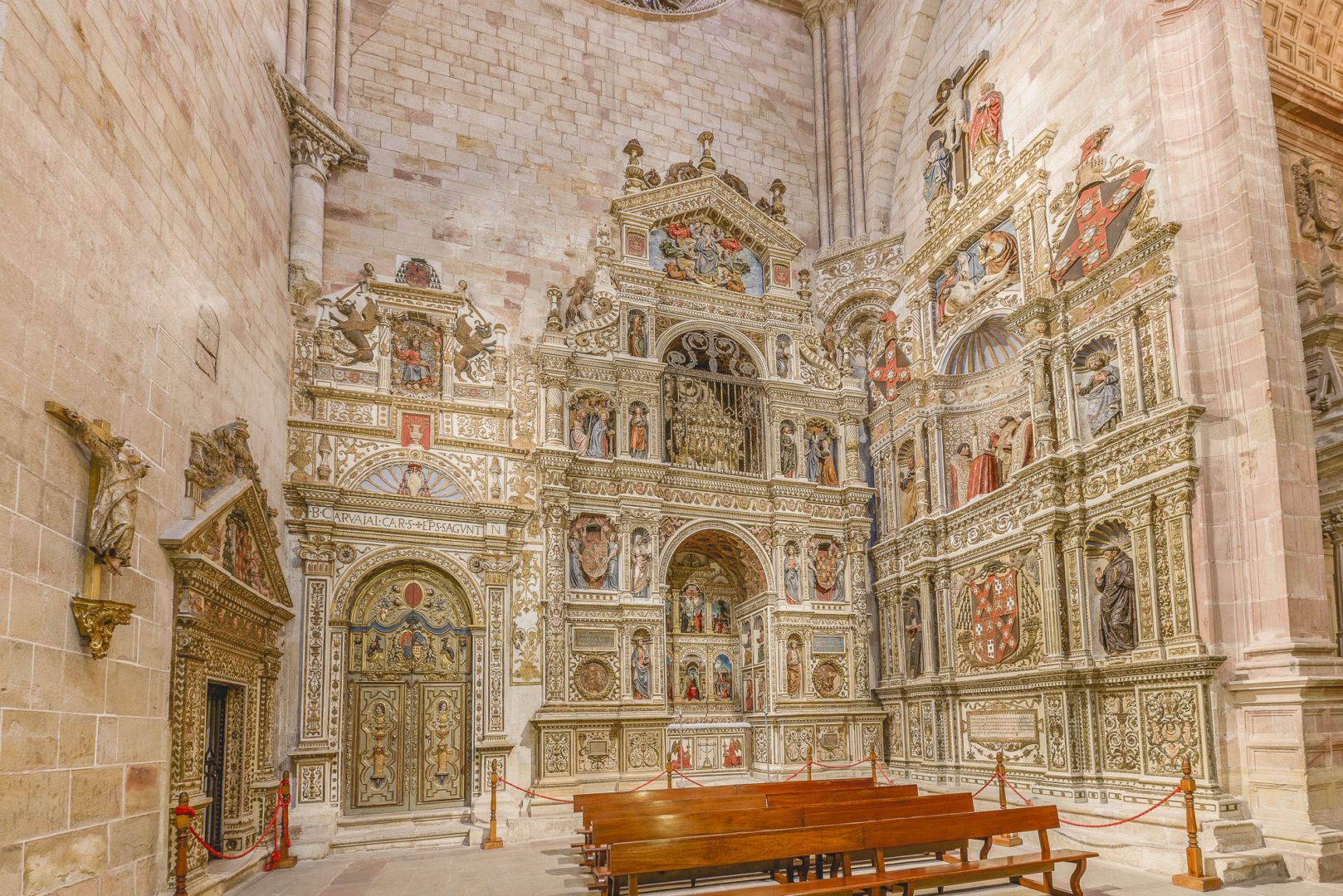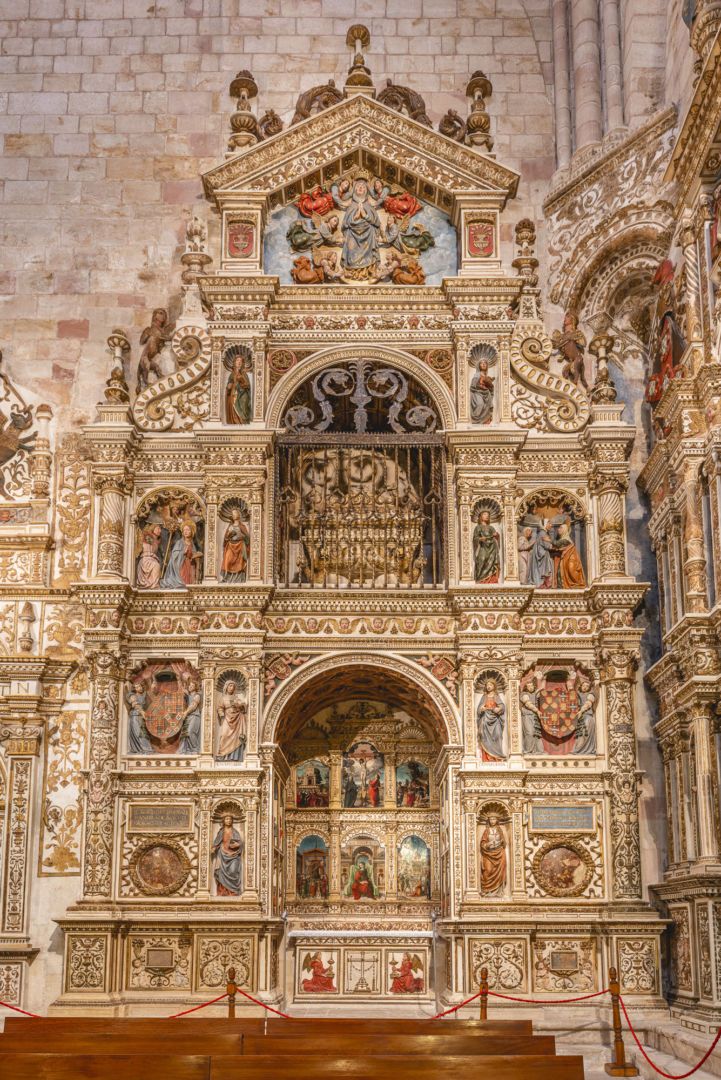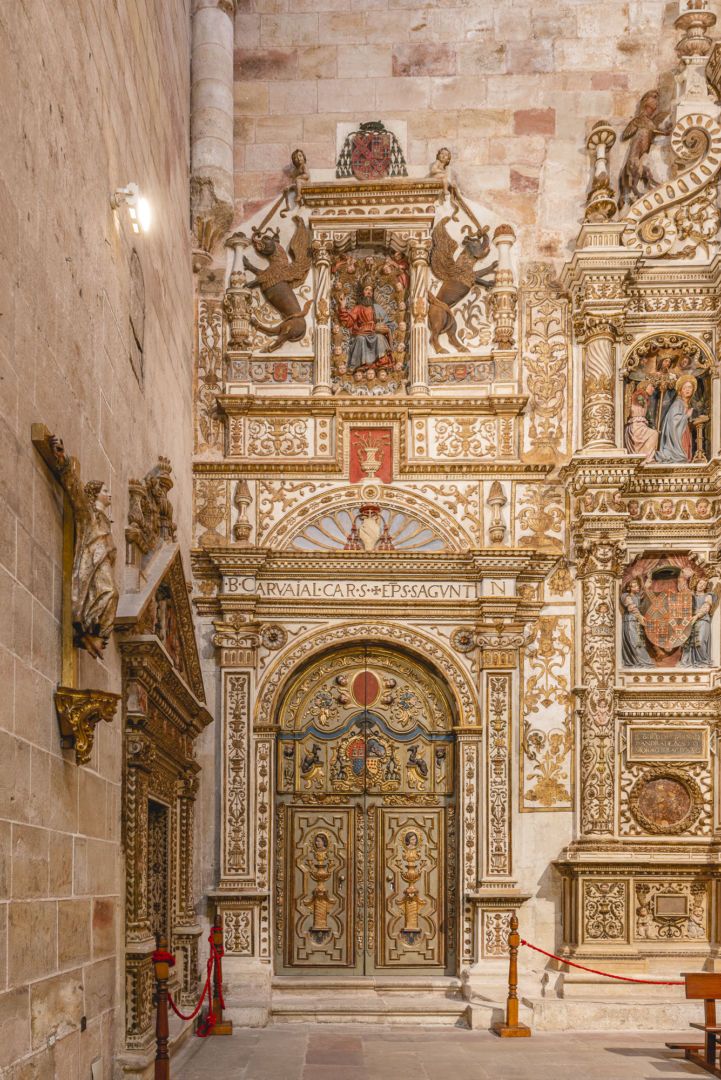his is one of the finest examples of Plateresque art (16th century). It adjoins the northern wall of the north wing of the transept, at the same height as the tomb of Cardinal Mendoza of Toledo. It was designed by Alonso de Covarrubias and the work was carried out by Sebastián de Almonacid and Juan de Talavera y Petijuán under the direction of Francisco de Baeza. It takes the form of an altarpiece-altar-sepulcher and it was restored during the papacy of Fernando de Andrade y Sotomayor (1640-1645) which is when the cartelas were added.
It is made up of various sections on a plinth featuring ornamental themes. In the center of the first piece there is a large niche with a semicircular arch which holds the altar of the saint. This contains a beautiful Mannerist-Rafaelesque altarpiece showing scenes from the life of Saint Librada, magnificent works of art painted by Juan Soreda between 1525 and 1526. These works of art reveal knowledge of the work of the young Rafael de Sanzio, of Urbino, rather than that of Bernardo di Betto, il Pinturicchio, or Pietro Vannicci, jl Perugino, or our own Giovanni da Spagna.
Below this altarpiece, the central section contains a frieze depicting mythological scenes, such as the Labors of Hercules, which symbolize the triumph of good over evil.
Although mythological representation had some medieval precedents, Soreda started to study them in a gallery of mythological themes contained in the pictorial decoration of the 16th century.
Our tour now continues, passing through Latin literature to approach the Altar of Santa Librada.
The most popular story in Spain was that of Hercules, and this was often contaminated by Christian influences, as it is in this altarpiece. From the extensive iconography of Hercules in Plateresque art, there are some examples depicted here (such as the episodes of Hercules or Alcedes killing the centaur Neso, who wanted to steal his wife Deianeira; the theft of cattle from the three-bodied giant King Geryon; the drowning of Cacus the giant thief who stole cattle by leading them by their tails in order to leave false trails; and finally strangling the fearsome lion in the wood of Nemea).
The superposition of purely Christian iconography onto mythological themes is eloquently shown in the Altarpiece of Santa Librada, in which four of the Labors of Hercules are represented next to an image of the saint. On either side are large coats of arms of Fadrique of Portugal, the founding bishop; the upper sections show, in the center, a large niche which encloses a stone urn and the Coffer of Saint Librada, patron saint of the diocese, in repose silver in the Florentine style (XIV century), where her remains are venerated. This is a work of art imported from Italy by, and made especially for, Bishop Simón Girón de Cisneros, which on its faces and lid displays rudimentary half-body figures of saints under pediments, set facing each other in pairs. The third section, much smaller, forms a high pediment with a scene from the Annunciation of the Virgin carved in relief. On the sides of the central niches there is a series of eight full-body images of the sisters of Saint Librada, all of whom, according to legend, were born on the same day and made saints.
The Mausoleum of Fadrique de Portugal
This is another fundamental work in Spanish Plateresque art, from the same period and by the same author as the sumptuous altar piece of Saint Librada (XVI century) with which it forms an angle. It was made around 1520, and was probably designed by Alonso de Covarrubias, although the work was carried out by Francisco de Baeza and his co-workers Sebastián de Almonacid and Juan de Talavera. It consists of a large base in whose center there is a wooden tablet with a Latin funeral inscription which refers to its construction at the expense of the founder Don Fadrique, son of the Count of Faro, a descendant of the Portuguese royal family. On top of this is the first piece, made up of a central piece from which a large coat of arms of the founding bishop stands out. At the sides there are niches with images of Saint Francis on the right and Saint Andrew on the left, the two niches being separated by repeated series of pilasters, balusters and friezes, profusely decorated with all kinds of Plateresque ornamentation. The second piece has a large central niche in which one can see the entombed, praying figure of Bishop Fadrique, accompanied by two clerics wearing ample capes. In the side niches there are images of Saint Peter and Saint Paul.
Above, there are still more carved scenes representing the Pieta, in haut relief, and a Calvary.
Throughout the work there is a surprising amount of detailed and extremely beautiful ornamentation of Plateresque grotesques and balusters.
Jasper Door
This «Jasper Door», thus known because of the material from which it is made, a pebbled marble between yellow and red, joins the cloister with the north arm of the transept. It is the oldest element in the new cathedral, dating back to the early-16th century, 1504 to be exact. The painter Francisco Guillén (1498-1509) of Toledo, an adherent of the canons of classical architecture, was commissioned to execute this door, though there is no record of his actually completing it, and it appears to be a simplification of the Santa Cruz in Valladolid, though it is more probable that it bears a direct Italian influence. Its carving is poor, due to the hardness of the material used. It is formed by a semicircular arch flanked by two pilasters mounted on pedestals somewhat short for the capitals, which are of the Corinthian order. Over this is an entablature and a frieze above which spring candelabras. The frieze reads: B. CARV AIAL. CAR. S. +, in allusion to the famed cardinal of Santa Cruz, Bernardino López de Carvajal, who was all so bishop of Sigüenza. His coat of arms is found in the middle of the frontispiece, between the two candelabras. A Gothic-style frieze frames the whole. Its disposition, completely singular thanks to these finishing touches, was repeated time and again in the cathedral building itself and in the house of the Bishop of Portugal. It is even found in the Palace of Peñaranda de Duero (Burgos), a work related to others in Sigüenza.
